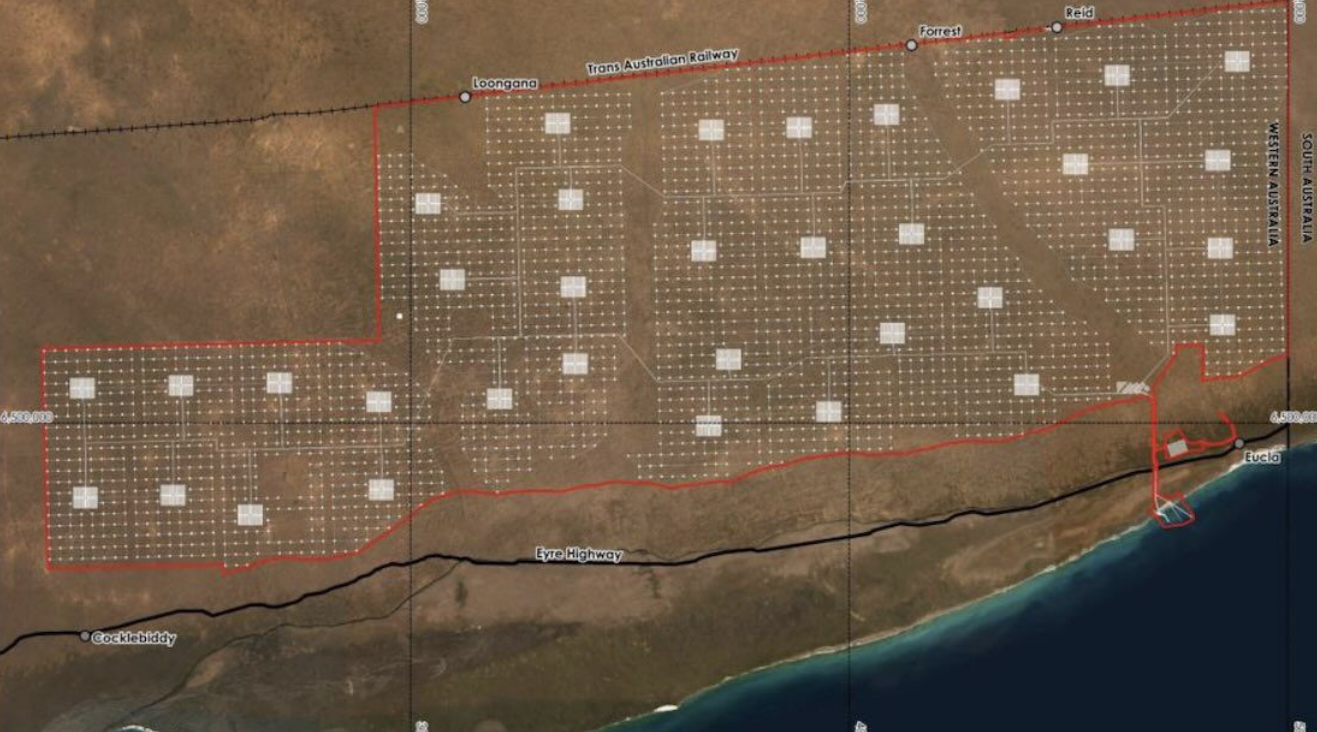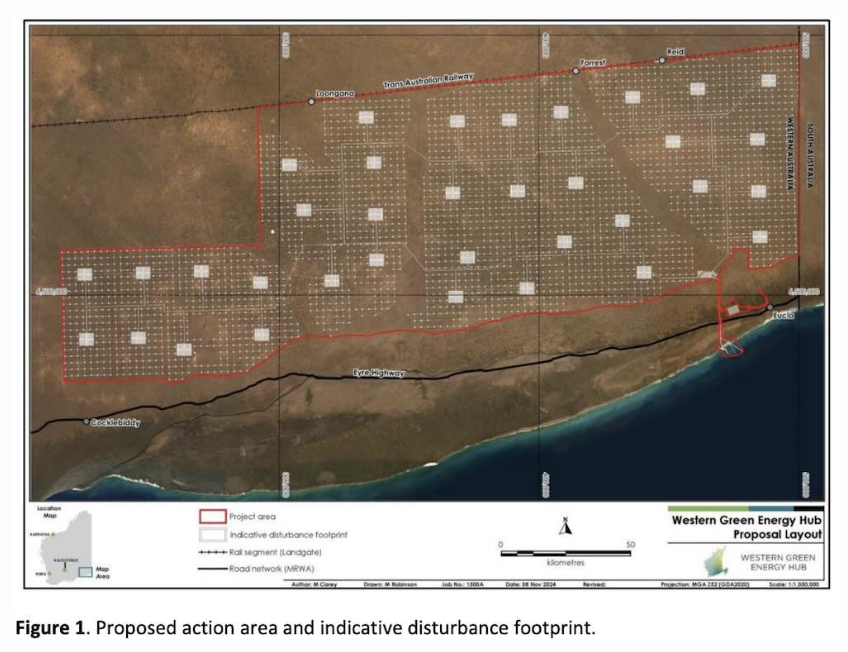3,000 turbines and 35 solar farms: New details emerge of massive 70 GW project proposed for Nullarbor

New details have emerged on the design and the sheer scale of what could be one of the world’s biggest wind and solar projects, with up to 70 gigawatts of wind and solar capacity proposed for a remote desert region in the south-east of Western Australia.
The Western Green Energy Hub, which wants to use the solar and wind power to create green hydrogen and green ammonia for industrial use, joined the federal EPBC queue in late 2024, and public comment has been invited for the terms of Environmental Impact Statement (EIS).
The documents explain that the project would include up to 3,000 wind turbines, 35 solar farms, hydrogen electrolysers, an ammonia (or other energy vector) production and storage facility, and water and hydrogen pipelines.
The sheer scale of the project, coupled with environmental concerns about its potential impact on subterranean land forms and underwater caves across the Nullarbor Plains, means it will likely be among the most scrutinised projects put before the EPBC.
The project is a joint venture of Singapore-based InterContinental Energy, renewables outfit CWP Global, and a subsidiary of Mirning Traditional Lands Aboriginal Corporation (MTLAC) called Mirning Green Energy Ltd (MGEL).
Intercontinental and CWP are also involved in a 26 GW wind and solar hub in the Pilbara to the north, although that proposal has been hit with news that controlling shareholder BP wants out.
The Western Green Energy Hub proposal also includes a “long-term village” for hundreds and potentially thousands of workers 10 km west of the tiny Eucla settlement, the documents say, and an existing quarry around 8 km north of Eucla will be expanded to provide aggregate for construction activities.

The marine components would extend about 5 km offshore, keeping them within WA state waters, and include a desalination plant and associated brine diffusers, a marine offloading facility and an offshore ammonia export pipeline and facility.
The desalination plant will source water from “multiple beach wells” and will be capable of producing approximately 80 giga litres (GL) of water a year, which will be used for hydrogen electrolysis, the cooling of ammonia production facilities, and as drinking water for the workers village.
The EIS notes that the project’s proposed marine offloading facility – necessary due to the project’s remote location – would require the dredging of around 3,800,000 m3 of rock and 100,000 m3 of sand. It says the dredged material will be used in the construction of a hardstand area adjacent to the wharf and to form the inner core of the break walls.
As Renew Economy has reported, the proposal is likely to take many years to work through environmental approval processes, alone – both state and federal – and already faces opposition from some quarters, including from the Bob Brown Foundation.
The Western Australia Environmental Protection Authority, which is carrying out the state-level assessment of WGEH, said in November that 259 of 282 submissions received called for the project to have a public environmental review, which the consortium will now be required to do.
The EPA also said the project presented a complex case: “Detailed assessment is required to determine the extent of the proposal’s direct and indirect impacts, and whether the EPA environmental factor objectives can be met.”
It cites the potential significant effects from the clearing of 27,188 hectares, the impacts on benthic (water based) communities and habitat, dredging and ship movements; the potential collision with wind turbines and vehicles, and on inland waters and subterranean land forms in the Nullarbor Plains limestone karst system.
The EIS provides a long list of matters of national environmental significance (MNES) known or likely to be impacted by the proposed project, including on a number of endangered and critically endangered species of fauna.
The critically endangered species listed is the Curlew Sandpiper and the endangered species listed include the Southern Right Whale, the Loggerhead Turtle, the Leatherback Turtle and the Southern Giant Petrel.
More information: https://reneweconomy.com.au/3000-turbines-and-35-solar-farms-new-details-emerge-of-massive-70-gw-project-proposed-for-nullarbor/


